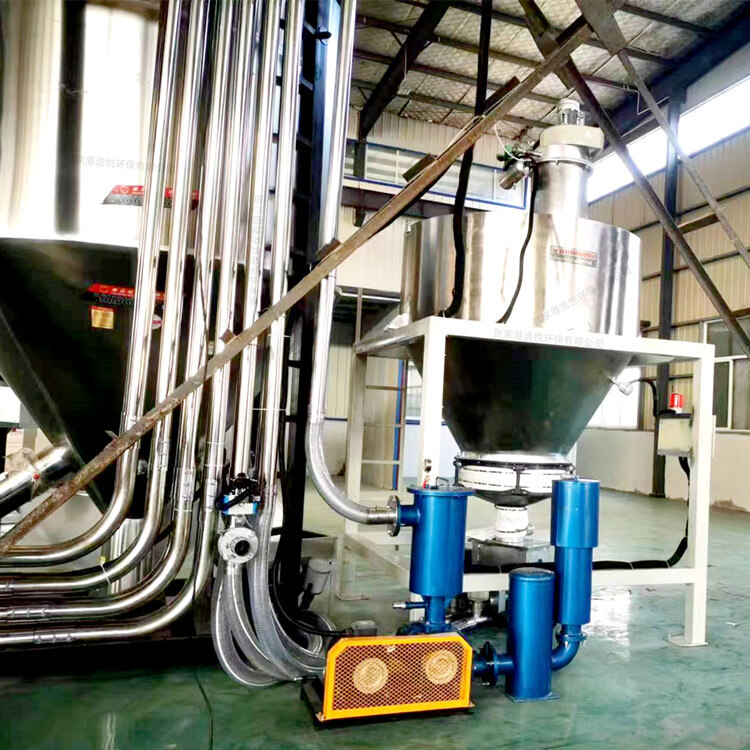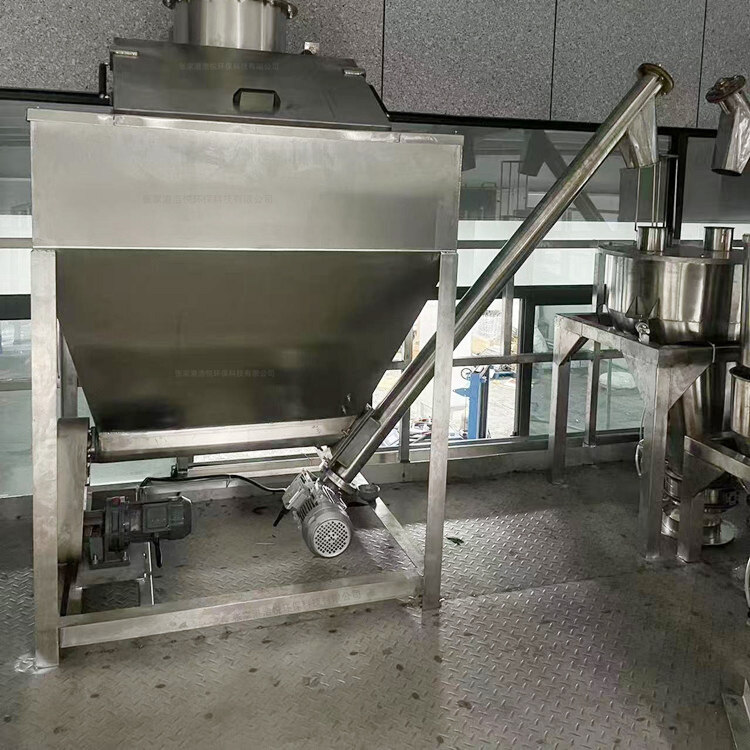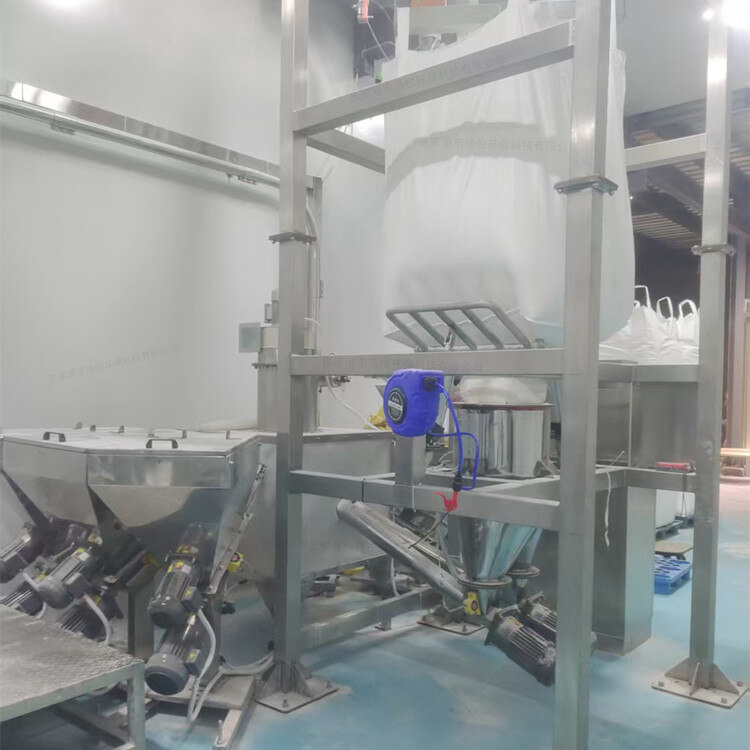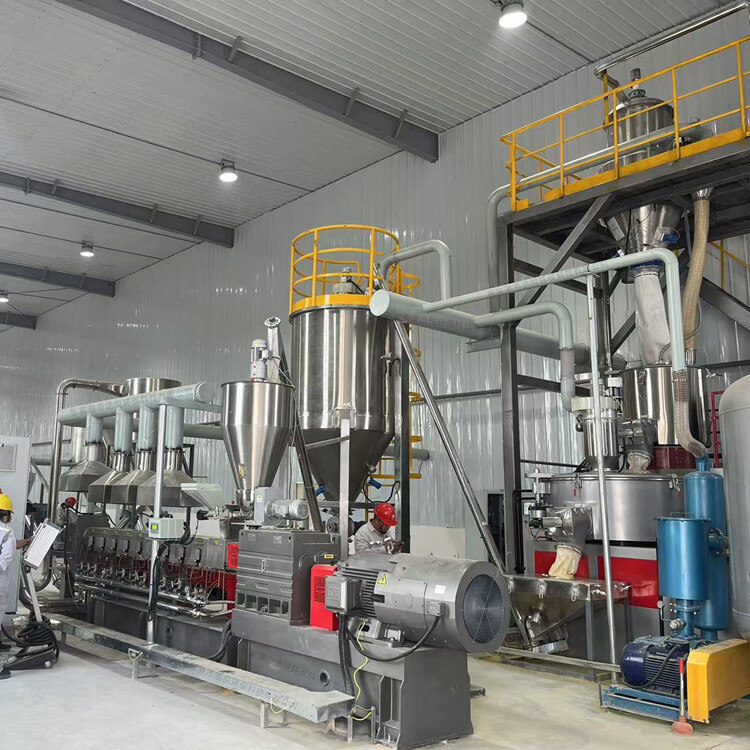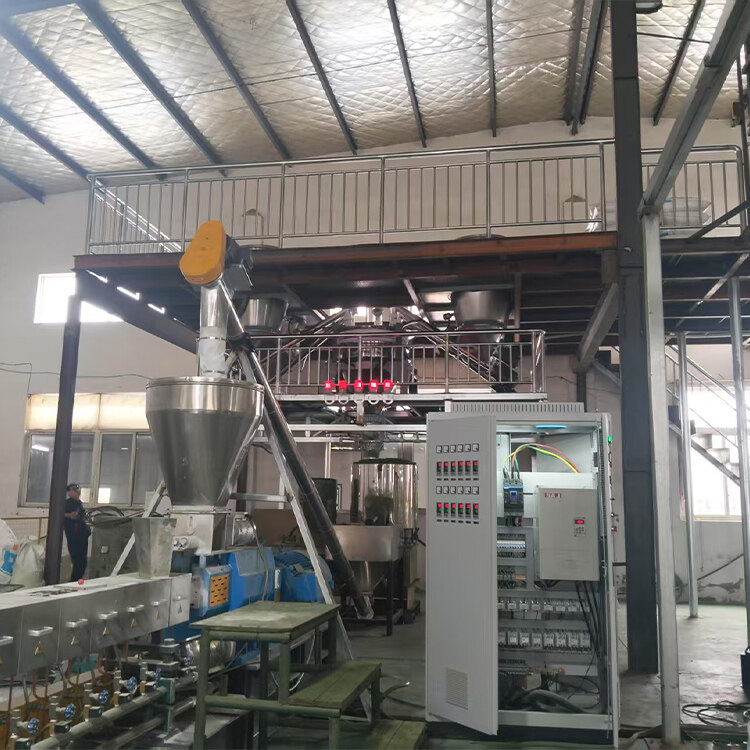- Introduction to automatic batching machine and fully automatic batching machine equipment
- The powder metering system tells you about the introduction of the mixing and drying machine
- 1000kg vacuum feeding machine
- Fully automatic small material batching system
- Research on Innovation of Automatic Weighing Machine Technology
- Design and operation of automatic batching system using PLC, industrial computer and frequency converter
Automatic feeding system
- Category:Batching Plant
- Hits:132次
- Release Date:2025-06-30
- Share:
- Inquiry
- Details
Under the trend of intelligent and automated industrial production, automatic feeding systems have become a key technological equipment for improving production efficiency, ensuring product quality, and reducing labor costs. This system achieves unmanned operation of the entire process from storage, transportation to addition of materials through automation control and precise measurement technology, and is widely used in multiple fields such as food, chemical, pharmaceutical, metallurgy, etc. The following will provide a comprehensive introduction to the automatic feeding system from the aspects of system composition, working principle, core advantages, application scenarios, and development trends.
1、 Composition and structure of automatic feeding system
The automatic feeding system mainly consists of five parts: material storage unit, measuring unit, conveying unit, control system, and auxiliary unit. Each part works together to ensure accurate and efficient addition of materials.
(1) Material storage unit
This unit is responsible for storing materials to be added and adopts diversified design based on material characteristics. For granular or powdered materials, sealed silos or hoppers are usually used, and some silos are also equipped with level sensors to monitor material inventory in real time. When the material falls below the set value, an automatic alarm is triggered to prompt the operator to replenish the material; For liquid materials, storage tanks are used and liquid level control devices are equipped to prevent material overflow. In addition, for materials with strong moisture absorption or easy oxidation, the storage unit will also add moisture-proof and nitrogen protection functions to ensure stable material quality.
(2) Measurement unit
The measuring unit is the core component for achieving precise feeding. According to the material form and accuracy requirements, it is mainly divided into three methods: volume measurement, mass measurement, and flow measurement. Volume measurement often uses devices such as volumetric measuring pumps and screw meters to achieve quantitative conveying by accurately controlling the space occupied by materials; Quality measurement utilizes high-precision weighing sensors and scales to directly measure material quality, effectively eliminating the influence of factors such as temperature and pressure on measurement results. It is suitable for scenarios that require extremely high precision; Flow measurement uses equipment such as electromagnetic flow meters and turbine flow meters to monitor the flow velocity of materials in real time, calculate the total amount based on time, and is suitable for dynamic feeding in continuous production processes.
(3) Conveyor unit
The function of the conveying unit is to transport the measured materials to the designated location. Common conveying methods include pneumatic conveying, mechanical conveying, and liquid pumping. Pneumatic conveying uses compressed air to transport materials along pipelines, which has the characteristics of long conveying distance and low material pollution. It is commonly used for powdered materials; Mechanical conveyors such as screw conveyors and belt conveyors are suitable for granular materials and achieve stable material transportation through mechanical transmission; Liquid pumping equipment such as centrifugal pumps and gear pumps are used for the transportation of liquid materials, and the conveying pressure and flow rate can be adjusted according to demand.
(4) Control system
The control system is the "brain" of the automatic feeding system, usually centered around a PLC (Programmable Logic Controller) or industrial computer. The operator inputs the feeding formula, feeding speed, batch and other parameters through the human-machine interface (HMI), and the control system coordinates and controls the discharge valve of the material storage unit, the start and stop of the metering unit, and the operation of the conveying unit according to the preset program. At the same time, the system has real-time monitoring and feedback adjustment functions. It collects data such as material flow rate and weight through sensors, compares it with the set values, and automatically adjusts the equipment operating parameters in case of deviation to ensure feeding accuracy.
(5) Auxiliary unit
The auxiliary unit includes dust removal device, cleaning system, safety protection equipment, etc. Dust removal devices can effectively reduce the dust generated during the transportation of powdered materials and improve the working environment; The cleaning system is used to regularly clean the interior of equipment to prevent material residue and cross contamination; Safety protection equipment such as emergency stop buttons, overload protection devices, etc., ensure the safety of equipment and personnel.
2、 Working principle of automatic feeding system
When the operator inputs the feeding instruction in the control system, the system first starts the discharge device of the material storage unit, and the material enters the measuring unit under the action of gravity or external force. The measuring unit accurately measures the amount of material based on preset measurement values by controlling valve opening and closing or equipment speed. After the measurement is completed, the conveying unit starts and transports the material to the target position according to the set path, such as the reaction kettle, mixer, or production line workstation. Throughout the entire process, the control system continuously monitors data from each link, adjusts the feeding speed and measurement accuracy in real time, and ensures the accuracy and stability of material addition. When the preset feeding amount is reached or the batch task is completed, the system automatically stops feeding and can generate feeding data reports according to demand for production management and quality traceability.
3、 The core advantages of automatic feeding system
(1) High precision and stability
The automatic feeding system adopts advanced sensors and control algorithms, which can control the measurement accuracy within ± 0.1% - ± 1%, significantly reducing errors compared to manual feeding and ensuring the consistency of product quality. At the same time, the system is not affected by human factors and can maintain stable performance during long-term continuous operation.
(2) Efficient automation
Realize 24-hour uninterrupted work and significantly improve production efficiency. The automatic feeding system can be linked with upstream and downstream equipment, such as seamless connection with mixers, packaging machines, etc., to form an automated production line, reduce manual intervention, lower labor intensity, and improve enterprise production capacity.
(3) Flexible formula management
Support the storage and quick switching of multiple feeding formulas. Operators only need to select the corresponding formula in the control system, and the system can automatically call parameters to complete feeding tasks for different materials and proportions, meeting the needs of multi variety and small batch production, and enhancing the flexibility of enterprise production.
(4) Data Management and Analysis
Equipped with data collection and storage functions, it can record information such as the type, quantity, and time of materials added each time, and generate visual reports. By analyzing data, enterprises can optimize production processes, predict equipment failures, trace product quality issues, and provide strong support for production decisions.
4、 Application scenarios of automatic feeding system
(1) Food and beverage industry
In food production, the automatic feeding system is used to precisely control the amount of sugar, salt, essence, additives and other materials added to ensure the stability of product taste and quality. For example, in the process of beverage preparation, the system can accurately measure raw materials such as water, juice concentrate, and sweeteners to ensure consistent taste for each batch of beverages; In the production of baked goods, automatic addition of flour, yeast, oil and other materials can improve production efficiency and product qualification rate.
(2) Chemical industry
In chemical production, automatic feeding systems can achieve safe and precise addition of hazardous materials such as corrosive, flammable, and explosive materials. In the production of coatings, precise control of the ratio of resin, solvent, pigment and other raw materials can improve the performance of coatings; In the field of petrochemicals, automatic addition of catalysts and additives helps to improve chemical reaction efficiency and product quality.
(3) Pharmaceutical industry
The pharmaceutical industry has extremely high requirements for the accuracy and safety of material addition. The automatic feeding system can ensure the precise ratio of active ingredients and excipients in drugs, avoiding contamination and errors caused by manual operation. At the same time, the system complies with GMP (Good Manufacturing Practice) requirements, ensuring the compliance and effectiveness of drug production.
(4) Metallurgical industry
In the process of steel and non-ferrous metal smelting, the automatic feeding system is used to accurately control the input of materials such as ore, coke, additives, etc., optimize the smelting process, improve the purity and quality of metal products, and reduce energy consumption and raw material waste.
5、 Development Trends
In the future, automatic feeding systems will develop towards intelligence, integration, and green direction. In terms of intelligence, artificial intelligence and machine learning algorithms are introduced to enable the system to have self-learning and adaptive capabilities, and to automatically optimize feeding parameters based on production data; In terms of integration, it deeply integrates with the enterprise's ERP (Enterprise Resource Planning) and MES (Manufacturing Execution System) to achieve collaboration in production planning, material management, and feeding operations; Greening is reflected in reducing equipment energy consumption, minimizing material waste, and adopting environmentally friendly materials and processes to meet the needs of sustainable development. Meanwhile, with the popularization of IoT technology, automatic feeding systems will achieve remote monitoring and fault warning, further enhancing the convenience and reliability of equipment management.


